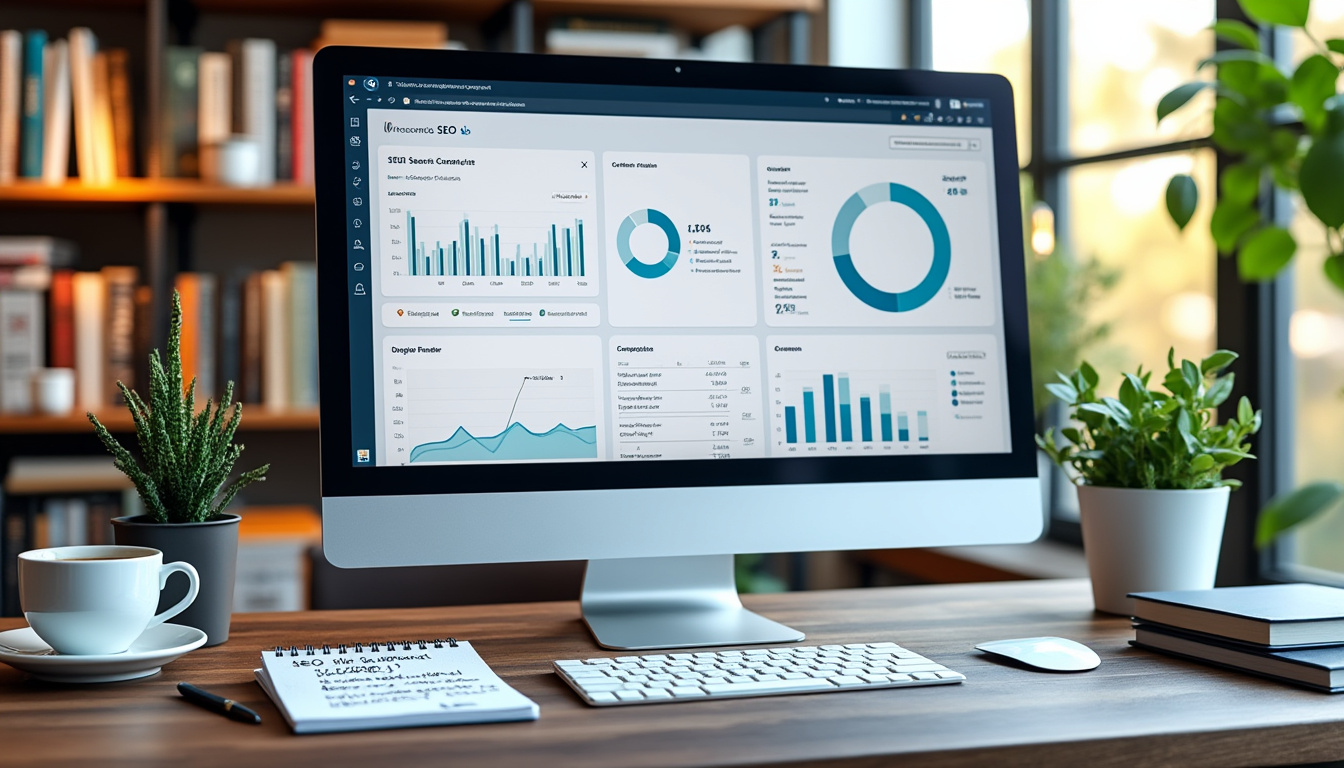Building a successful e-commerce site requires not only a well-designed platform but also effective SEO practices. Search engine optimization (SEO) is crucial for driving organic traffic to your online store, boosting visibility, and ultimately increasing sales. Implementing best practices in WordPress e-commerce sites can significantly enhance your ability to attract and retain customers. In this guide, we will explore essential strategies to optimize your WordPress e-commerce website effectively.
Let’s delve into topics ranging from keyword research, on-page SEO techniques, technical SEO, content creation, to leveraging analytics tools that help refine your strategy over time. By following these practices, you’ll be well-equipped to navigate the competitive landscape of e-commerce SEO in WordPress and achieve your business goals.
Understanding Keyword Research for E-commerce SEO
Keyword research forms the foundation of any successful SEO strategy. For an e-commerce site, targeting the right keywords ensures that potential customers find your products when they search online. Utilize tools such as SEMrush, Ahrefs, and Moz to identify keywords that your target audience is using.
Identifying Your Target Keywords
Start by brainstorming a list of products and services you offer. Once you have a preliminary list, feed these keywords into your chosen research tool to uncover search volumes, competition levels, and suggested related keywords. Pay attention to long-tail keywords, which are typically less competitive and can attract highly targeted traffic.
For instance, instead of just targeting “shoes,” explore specific long-tail variations like “women’s running shoes for flat feet.” Not only are these keywords easier to rank for, but they also attract users who are more likely to convert into customers.
Using LSI Keywords
Latent Semantic Indexing (LSI) keywords are additional phrases related to your main keywords. Including LSI keywords in your content helps search engines understand the context of your pages better. This practice not only enhances your SEO but also enriches user experience by providing relevant content that answers user queries.
For example, if your main keyword is “handmade jewelry,” LSI keywords could include “artisan jewelry,” “custom necklaces,” and “bohemian earrings.” Incorporate these terms naturally throughout your product descriptions, category pages, and blog content.
On-Page SEO Best Practices
On-page SEO refers to optimizing individual pages on your website to rank higher and earn more relevant traffic. WordPress provides powerful tools and plugins, such as Yoast and Rank Math, which assist in implementing effective on-page SEO strategies.
Optimizing Titles and Meta Descriptions
Your product pages should feature compelling titles and meta descriptions that incorporate your target keywords. Titles should clearly convey what the product is, while meta descriptions should provide a concise summary that encourages clicks. Aim to keep titles under 60 characters and meta descriptions between 150-160 characters for best display in search results.
Utilizing Header Tags Effectively
Header tags (H1, H2, H3) are essential for both SEO and the user experience. The H1 tag should contain your primary keyword and clearly indicate the topic of the page. Use H2 and H3 tags to organize content into scannable sections, utilizing variations of your keywords. This not only improves SEO but also aids visitors in navigating content effortlessly.
Optimizing Product Descriptions
Product descriptions must be unique, informative, and engaging to enhance both user experience and SEO. Avoid copying manufacturer descriptions; instead, provide original content that highlights features, benefits, and potential uses. Naturally incorporate your target keywords and relevant LSI keywords into these descriptions.
Additionally, consider including customer reviews and testimonials, as these can improve user engagement and provide unique content that search engines value.
Technical SEO Considerations
Technical SEO encompasses elements that improve the backend and structure of your website. Ensuring that your WordPress e-commerce site is technically optimized is crucial for boosting rankings and enhancing the user experience.
Improving Site Speed
Website loading speed is a critical ranking factor. Fast-loading websites provide better user experiences, leading to higher conversion rates. Utilize tools like Google PageSpeed Insights to assess your site’s speed and receive suggestions for improvement.
Consider implementing caching solutions such as WP Rocket and optimize images using compression tools to decrease load times. Fast loading times improve the likelihood of users staying on your site, thus impacting your SEO positively.
Ensuring Mobile-Friendliness
With an increasing number of users shopping via mobile devices, it is essential to optimize your WordPress e-commerce site for mobile traffic. Utilize responsive design techniques to ensure that your site adapts well to various screen sizes. Google prioritizes mobile-friendly sites in its rankings, so achieve a responsive design to enhance user experience across devices.
Implementing SSL Security
Having an SSL certificate on your site is crucial for ensuring the security of customer information and transactions. Google considers sites with SSL as secure, which positively impacts their rankings. Pave the way for user trust by displaying security badges, enhancing the credibility of your site.
Content Marketing and SEO Integration
Creating valuable content tailored to your audience is indispensable to contemporary SEO practices. A content strategy that integrates SEO can draw organic visitors, enabling them to discover products naturally.
Building a Blog for E-commerce
Starting a blog can significantly elevate your WordPress e-commerce site’s visibility. Produce regular, high-quality content that provides insight or solves problems relevant to your target audience. Not only does this increase opportunities for using keywords, but it also positions your brand as a valuable resource in the industry.
Blogs can include how-to guides, product comparisons, or latest trends that engage your customers and draw them closer to your brand emotionally. Use internal linking to guide readers to related product pages, enhancing their shopping experience.
Utilizing Social Media for Content Promotion
Effective promotion on social media platforms can drive traffic to your WordPress e-commerce site. Share your blog posts, product updates, and customer testimonials to engage with your audience and encourage shares. Ensure that your content resonates with the values and preferences of your target demographic.
Utilize platforms like Instagram and Pinterest to showcase product images, as these visual platforms can grab the attention of potential customers instantly. Engaging in social media conversations and promoting user-generated content can strengthen brand loyalty and trust.
Leveraging Analytics Tools for Continuous Improvement
Monitoring your SEO performance and refining your approach based on insights is key to long-term success. Utilize tools like Google Search Console and MonsterInsights to track organic traffic, keyword performance, and customer behavior.
Regularly review and analyze which keywords are driving traffic and which pages are converting best. Use these insights to adapt your content strategy, onboard new product offerings, and enhance the shopping experience. Measuring visitor engagement metrics can provide vital feedback that transforms your overall strategy for optimal impact.
Conclusion and Next Steps
Integrating the best SEO practices into your WordPress e-commerce site can lead to increased visibility, enhanced user experience, and ultimately, higher sales. Harness tools and strategies while emphasizing continuous improvement based on data insights. By aligning your approach with the unique needs of your audience, your e-commerce site can thrive in the competitive online landscape.
| SEO Elements | Description | Recommended Tools |
|---|---|---|
| Keyword Research | Identifying search phrases that attract potential customers. | SEMrush, Ahrefs, Moz |
| On-Page SEO | Optimizing titles, meta descriptions, and product pages. | Yoast, Rank Math |
| Technical SEO | Enhancing site speed, mobile-friendliness, and security. | WP Rocket, Google PageSpeed Insights |
| Content Marketing | Creating valuable content that drives traffic and engagement. | Google Analytics, MonsterInsights |









